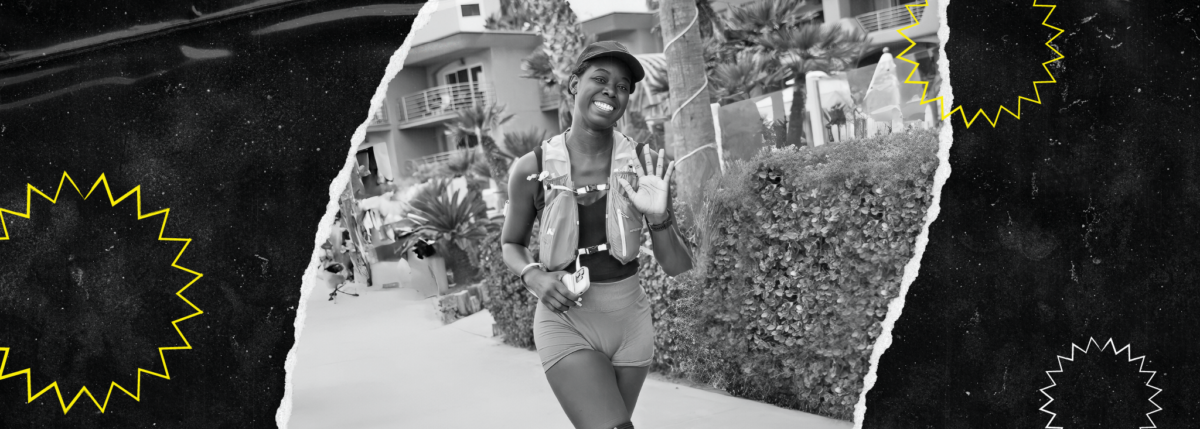What I Wish People Knew About Type 3c Diabetes
Written by: Jen M.
5 minute read
September 4, 2020
What do you think of when you think of a diabetes diagnosis story? It could be a type 1 diagnosis story when someone experiences diabetic ketoacidosis (DKA) symptoms and gets admitted to the hospital. It could be a type 2 diagnosis story of someone diagnosed through blood work at a routine doctor’s appointment. My story is a little bit different.
I am a type 3c diabetic. Most people I converse with have never heard of my type, and that’s okay. Since my diagnosis, I have found a passion for educating the general public and the diabetes community about type 3c and what life is like living without a pancreas.
You read that right, I don’t have a pancreas at all!
In December 2015, I woke up with severe abdominal pain. At first I thought it may have been a stomach ache and tried to rest. As the day went on, the pain continued to get more severe. And when I say severe, I mean the worst pain I have ever felt. It is difficult to even put the experience into words. I was visiting my parents for Christmas and my mom drove me to the local emergency room. What I thought would be a quick trip turned into a four-week stay. I was diagnosed with pancreatitis and they spent those weeks trying to get the pain under control and figure out why this was happening.
The journey to figure out why I, a 25 year old with no family history and no alcohol use, was having repeated episodes of pancreatitis took about seven months. I was in and out of the hospital every few weeks with recurring flares. I’ll spare all of the details, but it was finally determined that I had two genetic mutations in the SPINK gene and the CFTR gene. The combination of these gene mutations explained why I had chronic pancreatitis. I consulted with several doctors at different hospitals and they all agreed that the best plan of action to improve my quality of life would be to perform a total pancreatectomy.
I had my surgery on February 2, 2017, a little over 1 year after my first diagnosed pancreatitis flare. The surgery is called a total pancreatectomy with autologous islet cell transplant (TPAIT). The surgeon removed my pancreas, spleen, gall bladder, duodenum and lower portion of my stomach. As people with diabetes know, insulin is incredibly important, so in an ideal case, the surgeon would remove the pancreas and isolate the islet cells from the pancreas and transplant them into my liver. According to my surgeon, 36.9 percent of patients in his research studies became independent from insulin after islet transplant. Hearing this before surgery made me optimistic, however there was extensive damage and calcification to my pancreas when they removed it and the islet cell yield made my transplant unsuccessful. I have been fully insulin dependent since the second my pancreas was removed from my body.
So I want to explain briefly exactly what type 3c diabetes is. It is referred to as “pancreatogenic” diabetes, which means diabetes that results from a pancreatic condition. Examples of pancreatic conditions could be exocrine insufficiency, pancreatitis, cystic fibrosis, pancreatic cancer, or partial or total pancreatectomy. As you can imagine, it is a complex condition that is not widely researched or even recognized by many medical professionals. After asking my close TPAIT friends, most of us don’t even have the diagnosis of type 3c in our charts, because insurance won’t cover devices and supplies under that diagnosis code. Most of us have type 1 diabetes as our chart diagnosis, an entirely different autoimmune condition.
Type 3c may have similarities to type 1 due to the fact that both conditions require insulin, but that’s the only similarity. There are a few big differences to note. With TPAIT related type 3c specifically, since our pancreases are completely removed we have no alpha cells. In the most simplified definition, alpha cells secrete glucagon, which works opposite to insulin by increasing the amount of glucose in the blood. Without these alpha cells we are at risk for “brittle” diabetes and large swings in our blood sugar. Another big difference between TPAIT type 3c and other types is the malabsorption issues that we can face after surgery. Since we have large portions of our digestive systems removed, including the lower stomach and duodenum, the way our food and nutrients are digested may impact our insulin needs.
The pancreas has both endocrine and exocrine function. The endocrine function is secreting hormones, such as insulin, into the blood and the exocrine function is secreting digestive enzymes, bicarbonate, and water into the duodenum to begin the digestion of food. Most type 3c diabetics require prescription digestive enzymes when eating. Pancreatic conditions typically affect the exocrine function of the pancreas so we have to supplement these enzymes to aid with digestion. Without the proper dosage and timing when taking the capsules, we cannot properly digest food and can face serious gastrointestinal complications and malabsorption of nutrients.
When it comes to the diabetes community, there is not a large representation of people with type 3c. Type 3c is rare and often misdiagnosed. When someone is suffering from a pancreatic condition and they develop diabetes as a result, doctors often just call it type 2. I imagine this is due to a lack of information, research on type 3c, and insurance coverage.
There are a few things that I wish people knew when it comes to type 3c. The most important to me is that, when you have diabetes alone, your pancreas isn’t “dead”. The pancreas is often referred to as dead or useless in the diabetes community. Using these terms is false and misleading.
Endocrine cells make up 5 percent of the overall pancreas. Diabetes is an endocrine disease, and diabetes doesn’t necessarily mean you have zero pancreatic endocrine function. Many people with type 1 diabetes may have functioning alpha cells (producing glucagon) because the initial autoimmune attack is limited to the beta cells of the pancreas. Exocrine cells make up the other 95 percent of the pancreas, and for people with type 1 diabetes and no other pancreatic condition, this function is still working smoothly. Both endocrine and exocrine functions are vital in their own way to the body. Your pancreas could be considered “useless” if you are missing both of those functions. In any other context, it spreads misinformation.
I feel that most people with diabetes, of any type, want the general public to better understand our condition. We want them to understand the differences between the types. We want them to understand what causes or doesn’t cause diabetes. If that’s the case, why would we want to give them misinformation in the process? It’s not helping society understand diabetes. It’s not helping people with diabetes to understand diabetes. I honestly think that some people who say their pancreas is useless believe it to be true, because it’s what they’ve heard others say. And I know the diabetes community can do better to help educate within our community and also to the general public. I know the type 3c community would appreciate being recognized and validated. We haven’t had many opportunities to have our voices heard from large diabetes organizations or within the community. I know I will never stop using my voice to advocate for us. I can only hope to have the support of the diabetes community behind us.

Author
Jen M.
Jen is 30 years old and lives in New Orleans, LA with her husband, Eric, and her chiweenie, Hannah. She enjoys baking and watching new TV shows. Before her struggles with chronic illness and major surgery, Jen graduated from The Ohio State University and became a dental hygienist. Since her journey with chronic illness, Jen has become passionate about sharing her story with others and spreading the word about different types of diabetes. She loves connecting with anyone and everyone and can be found on Instagram @jenhasdiabetes.
Related Resources

Antoine Gibson is no stranger to overcoming challenges. As a saxophonist and marathon runner living...
Read more

Danica Collins not only prepared for one of the most challenging physical events of her...
Read more

Beyond Type 1 is spotlighting inspiring athletes with type 1 diabetes as they prepare for...
Read more

